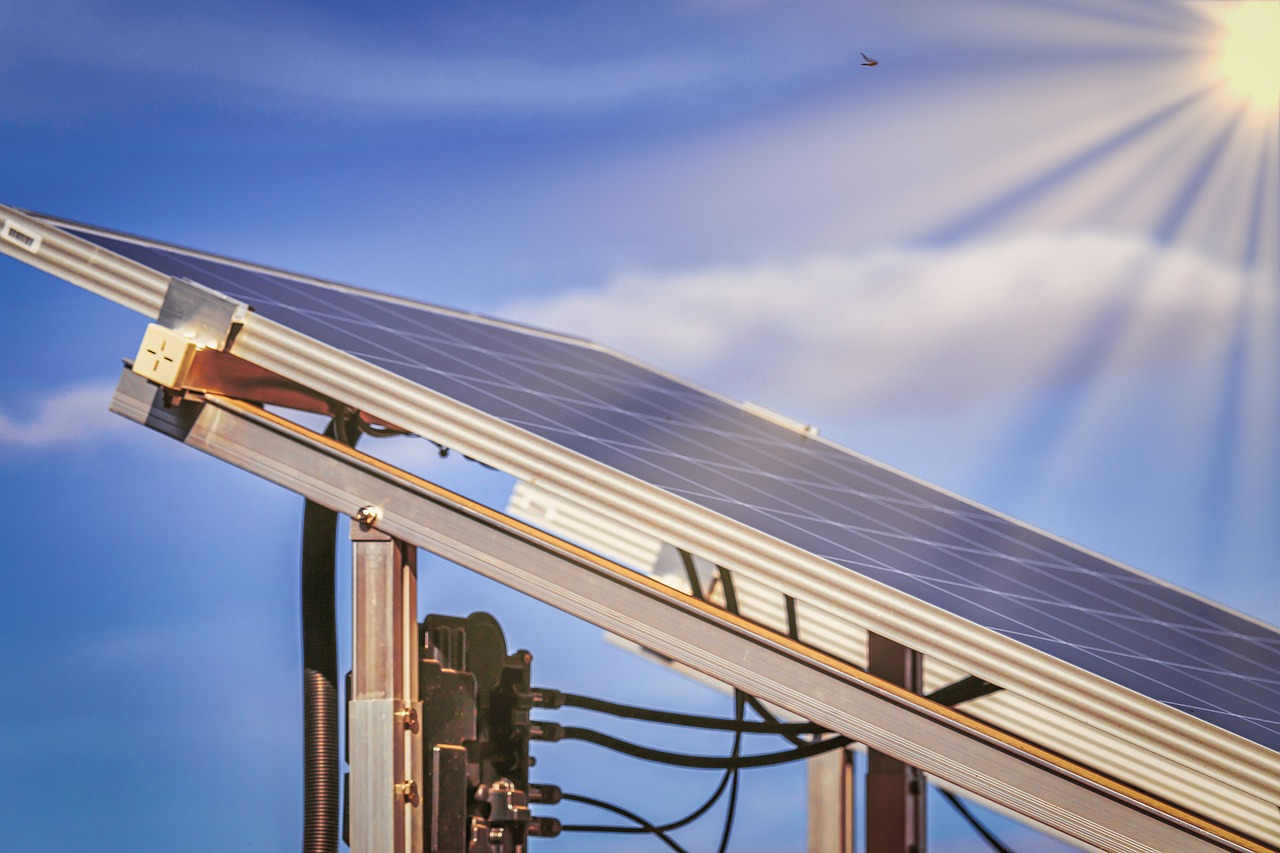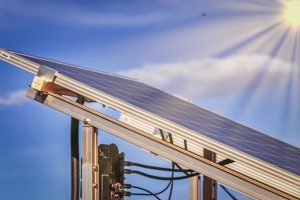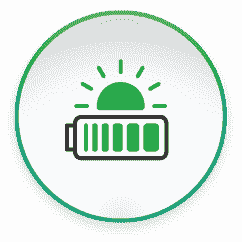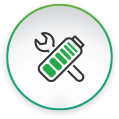The Effects of Shading on Solar Panels
Solar panels generate electricity from the sunlight energy that falls on them. Therefore it’s obvious that when a panel (a ‘module’) is shaded from the sun (by a nearby tree, chimney or whatever) then its output must drop. However, quantifying the reduction is not straightforward.
Solar panels are typically joined together in series in a single ‘string’, i.e. the output wire of one panel is the input on the next panel, and then the first and last panels are joined to the inverter. Being in series means that the same current must flow through all the panels (since they’re all on the same wire).
The conventional wisdom is therefore that shading on a single panel must reduce the overall generation of the string since the shaded panel must have reduced current, so the current through the whole string must also be reduced. In fact this is what I was told on my solar designers course:
“When the whole or even part of a module is shaded it is like inserting a resistor in the circuit. The whole unit or possible string may cease generation and this can cause irreparable damage to the module.”
We can see this is the commonly accepted view from just the first page and a half of a simple Google search:
- “Similarly, when a solar cell is shaded, the electrical current through the entire string can be reduced. This is significant because every PV cell in the cell string has to operate at the current set by the shaded cell. This limitation prevents the unshaded cells from operating at peak performance.”
- “A shaded PV module can bring down the power output of an entire string”
- “If, as an example, shade from a tree or a chimney falls on even one in all the panels within the string, the output of the whole string reduced to just about zero for as long as the shadow sits there.”
- “Shade on one PV module reduces the electricity generation from a whole string of modules.”
- “Hard shading can have severe effects, potentially shutting down entire strings of cells or panels.”
- “Shading one cell reduces the output of the whole string of cells or modules.”
This is clearly a major problem if a single bit of shade can kill the output of half your solar array, if you have the typical two strings of a residential install, or even the whole array if you have just a single string.
So what’s the solution? The answer is either micro-inverters or power optimisers; these are DC-AC and DC-DC transformers respectively, and known collectively as Module Level Power Electronics (MLPE) systems. Essentially one is fitted behind each panel and it adjusts the panel voltage independently of the rest of the string. Each panel can then work optimally, even while all the panels share the same current – so the whole string isn’t affected by a low voltage on a single panel.
The most well known micro-inverter systems are manufactured by Enphase while the most well known optimisers are manufactured by SolarEdge (for their own inverters) and by Tigo (for other makes of inverters). These systems are recommended by the majority of installers for situations where it is known that a property experiences shading – they will either be installed on every panel, or concentrated on those panels that will get specific shading (e.g. from a chimney or roof vent pipe). Optimisers aren’t cheap, typically costing 50% to 100% of the cost of a panel, so can increase the overall cost of an install massively. This significant extra cost is justified by the claim that the presence of optimisers reduces the lost generation.
So What’s the Issue?
There has been increasing evidence recently that this narrative isn’t really true, or at least has been heavily exaggerated, though it was true in the past. When tested thoroughly in real-world conditions it has been shown that the addition of optimisers can produce very little, if any, improvement in the performance of a string during shading.
There are some good examples of detailed testing here, comparing a conventional string inverter vs micro-inverters, or a string inverter with vs without optimisers:
- NRG Solar: Micro and String Inverters in the Shade – Testing the True Impact of Shade on Solar Panels
- Solartime: I tested 20 different shading scenarios on Solar Panels
- Are PV Optimizers Worth the Money (e.g. SolarEdge)?
Early designs of solar panels were highly susceptible to shading. As the design of panels has improved, however, this issue has drastically reduced. Specifically, panels now incorporate bypass diodes which are small bits of electronics that allow the current in the string to bypass issues in a particular panel.
The panels that we and most UK MCS registered installers use contain at least 3 bypass diodes, so shading in theory can reduce power in just 1/3 of the cells in a panel (or just 1/6 in panels made of half-cut cells). However, as the testing above shows, this is the worst case and very often the power reduction is barely noticeable.
When We Use Optimisers
So, do we conclude that micro-inverters and optimisers are not worth using? No, they have their uses, but their benefits for reducing the effects of shading should not be exaggerated.
While we will not use them by default to reduce effects of shading, there are cases where they are still useful bits of kit and justify their extra expense.
Examples of good usage include:
- Where strings consist of panels facing in different directions, say half east and half west, and are connected to the same inverter input.
- Where it is difficult to achieve the inverter start-up voltage. For example, if the minimum number of panels is connected to an inverter it can take until later in the day to achieve start-up without optimisers.
- Where a customers wants panel-level monitoring (i.e. to see how each panel is operating individually): this is only possible with a micro-inverter or optimiser on every panel.
- Where safety factors or insurance requirements are paramount: solar panels generate power even when not connected to an inverter (i.e. when the isolator switch between the panels and inverter is turned off, there is still power between the panels and the isolator). In contrast, the output from a micro-inverter or optimiser attached to a panel is at a low level so the cables from the roof are safe to touch. Specifically, Enphase micro-inverters only output when they detect they are connected to a grid voltage. SolarEdge optimisers only output about one volt unless they are in communication with the inverter and are told to power up.
- Micro-inverters output AC directly so can completely replace the need for a separate inverter. This makes them ideal for a system with just a few panels – adding micro-inverters can actually be cheaper than using a conventional inverter, and also make it easier to expand the system later.
If you are interested in a custom solar design for your situation, just ask Tanjent.






